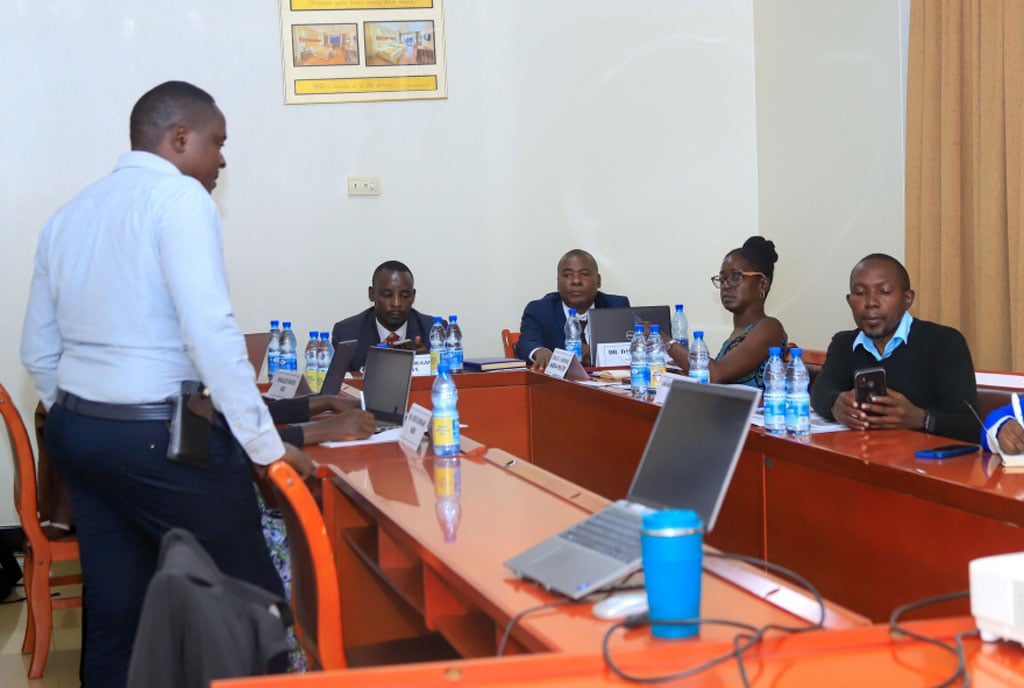Prime
Poor people are the happiest - Lango sub region study reveals

Children at their home in a remote village in Alebtong District. A new study reveals that Alebtong is the happiest district in Lango but they are the poorest in the sub region. PHOTO BY BILL OKETCH
What you need to know:
- The study says that in general, 43 per cent of the people in the study areas were very happy. And only 3 per cent of poor people were unhappy.
- The objective of the study that looked at whether there is any relationship between income, health, wellbeing and happiness was to enhance evidence based programming, policy and business in the sub region through research and innovation.
- The finding was based on the information collected from the respondents interviewed.
- However, Mr Charles Opio of Lira University said it doesn’t make sense for poor people to be happy because money is “everything” and with money one can do anything.
A latest study conducted by a Non-Governmental Organisation in four districts in Lango Sub-region has discovered that the poor are the happiest people.
The perceptual study on happiness and wellbeing conducted in Alebtong, Dokolo, Lira and Oyam in January 2018 revealed that communities in Lango sub region are very happy; “they are so satisfied with life but they are very poor.”
Out of the 402 participants interviewed, 86.5 per cent felt satisfied with life, but as the researchers dug deeper into their standard of living, majority of the respondents were actually found to be very poor.
People in Alebtong were found to be the happiest compared to their counterparts in Dokolo, Lira and Oyam. But considering their income levels, they are poorer than their counterparts in the study areas.
The study says that in general, 43 per cent of the people in the study areas were very happy. And only 3 per cent of poor people were unhappy.
The objective of the study that looked at whether there is any relationship between income, health, wellbeing and happiness was to enhance evidence based programming, policy and business in the sub region through research and innovation.
The research design adopted was a descriptive type. The researchers looked at the entire population from the four districts and randomly sampled 402 respondents, which they believed was a representative figure for the entire Lango sub region.
There are 1,206,433 people in Alebtong, Dokolo, Lira and Oyam, according to National Population and Housing Census of 2014. The eight districts of Lango had a total population of 2.1 million people as of 2014.
Both open-ended and closed questionnaires were administered to 103 respondents in Oyam, with a population of 388,011 people.
102 participants, out of 410,516 people living in Lira took part in the study while 95 and 102 respondents from Dokolo and Alebtong respectively were interviewed.
The finding was based on the information collected from the respondents interviewed.
However, the study faced some limitations including inadequate time and resources for the research team to cover the entire eight districts of Lango, and some respondents, especially men were afraid of being judged as poor or rich since researchers interviewed them in the presence of their wives.
The other limitation was that there was no literature on happiness in the East African region. The researchers restricted their references to most of the studies done in Europe and US.
Disseminating the study in Lira Town on April 24, the executive director of Global Health Network (U), Dr Bob Achura, said they did a lot of review and literature during the study.
“We got information from secondary data to kind of guide this study and the instrument we used was questionnaire. We found that 42 percent of the respondents earned on average Shs10,000 to Shs100,000, reflecting that almost half of the people in Lango don’t earn at all.”
However, Mr Charles Opio of Lira University said it doesn’t make sense for poor people to be happy because money is “everything” and with money one can do anything.




